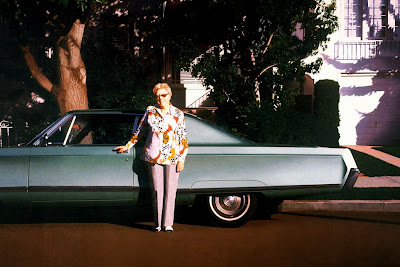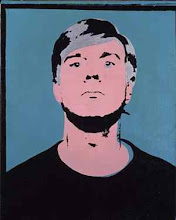The 2013 Turner Prize is currently showing at Building 80/81, Ebrington, Derry-Londonderry and continues until 5 January 2014. The winner will be announced on Monday 2 December 2013.
The shortlisted artists are: David Shrigley, Laure Prouvost, Lynette Yiadom-Boakye and Tino Sehgal.
Watch a video introduction to the show by Adrian Searle and read reviews by Laura Cumming and Adrian Searle.
David Shrigley
For his Turner Prize installation, Shrigley, best known for his wonky, comic drawings has produced a 7 foot tall, sculpture of an ill-proportioned, male life-model who blinks and periodically pees into a bucket while visitors to the exhibition are invited to draw him and add their pictures to the exhibition.
Watch a short film of Shrigley talking about his work. Watch 'Shrigley Films' on YouTube.
Laure Provost
Provost’s
junk filled installation and accompanying film, Wantee, are an homage to her
(fictional) grandfather, a friend of Kurt Schwitters and ‘a bottom-obsessed conceptual artist who once
decided to tunnel to Africa through the living room floor. One day he never
came back.’ The work's title - Wantee -was the name of Kurt Schwitters’ girlfiend. According to the Tate, Provost's 'unique approach to filmmaking, often situated within atmospheric
installations, employs strong story telling, quick cuts, montage and
deliberate misuse of language to create surprising and unpredictable
work.'
Watch a video of Provost talking about her work and an interview with Adrian Searle about Swallow – 'an
immersive film that aims to show the taste of the sun, with birds eating
raspberries and women bathing in waterfalls – and a cylindrical
structure full of collages and monitors'.
Yiadom-Boakye's dark paintings of black subjects are displayed spotlit in a darkened room, out of which the whites of their eyes, teeth, shirts and underwear gleam. According to the Tate, 'her portraits of imaginary people use invented pre-histories and raise
pertinent questions about how we read pictures in general, particularly
with regard to black subjects'.
Sehgal won't permit his work to be photographed or filmed - the piece presented here is This Exchange (2003) which involves the visitor entering a brightly lit, empty room to be approached by a man who invites you to have a conversation about market economies - if you accept, he promises to pay you £2.00!
Who will win? If the views of Searle and Cumming are anything to go by Sehgal would seem a safe bet: both critics were particularly enthusiastic about the work for which Sehgal was nominated -These Associations - at the Tate in 2012. In this piece a large cast of actors/performers swept back and forth through Tate Modern's Turbine Hall, singing and chanting and individually engaging with members of the public to reveal their 'life stories'; call me an un-sociable old fuddy-duddy but I found the experience at best underwhelming and at worst like being trapped by the pub bore and desperately wondering how to politely escape. Personally, I have no wish for art to talk back to me!
As for the rest - well, I have never seen Provost's or Yiadom-Boakye's work except in reproduction so find it hard to judge; for what it's worth my vote goes to Shrigley.














































